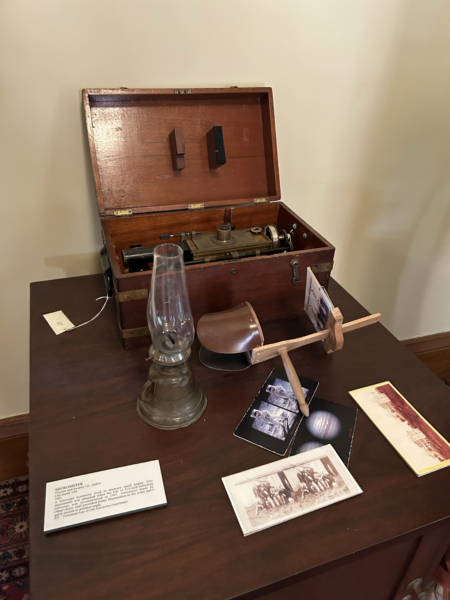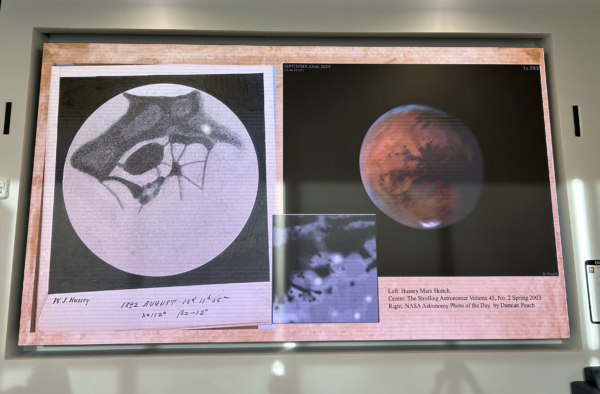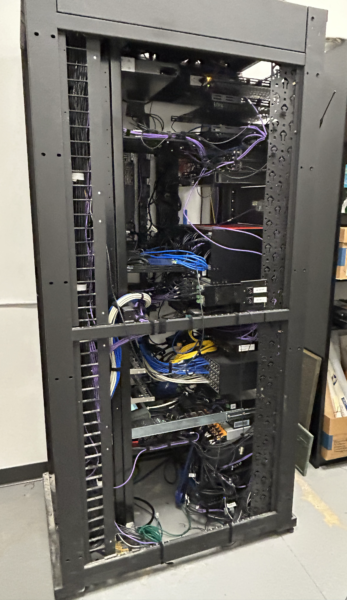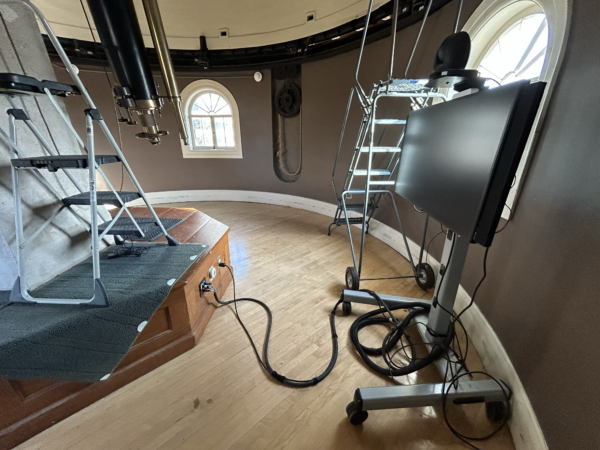
The Judy and Stanley Frankel Detroit Observatory pairs historical technology with modern technology to educate students, the university community, and the public.
Since its inception, the Detroit Observatory has been at the forefront of technology. “Especially in the mid- to late-1800s, the observatory was on the cutting edge of astronomy,” said Gregory Parker, director of the Detroit Observatory.
Built in 1854, the Detroit Observatory quickly became the hub of scientific advancement at U-M. It still houses the Fitz and Meridian Circle precision telescopes. In their heyday, these telescopes were the pinnacle of astronomical technology worldwide.
By the early 1900s, the nature of astronomical research had changed, and the observatory’s equipment and location placed it at a disadvantage. However, it continued to play an essential role in teaching new generations of astronomy students at the university. Today, it is open to the public and offers history and astronomy programs. Students from many disciplines serve as docents who also create some of the educational content on display and lead tours at the observatory.
Parker explained that they are housed within the Bentley Historical Library. “The observatory is an outpost of the Bentley,” he said. “It is a fascinating 3D historical artifact.”
Antiquities are displayed throughout the building, showcasing the technology of its day. Visitors can check out the stereoscope, a device that uses two slightly different images (one for each eye) to create the illusion of a three-dimensional image when viewed through a lens. This was considered groundbreaking technology for simulating 3D views. Austin Edmister, assistant director for astronomy, shared that the 3D movie industry uses similar technology today.


New Construction, New Technology
In 2019, construction began on a new wing. It re-opened in 2022 with a new addition and a new name recognizing its benefactors: the Judy and Stanley Frankel Detroit Observatory.
Tech updates included an accessible entryway with a jumbotron display; exhibit spaces and showcases; a multipurpose classroom with cameras, computers, and state-of-the-art A/V equipment; an elevator; and several smaller monitors with touchscreen capabilities.

A massive monitor greets visitors at the entry with digital educational and historical tidbits, videos, and signs. The large display is actually made of many smaller monitors that can be swapped out when pixels fail. The display is contracted through a third-party vendor, Planar. Maintenance is conducted one to two times a year.
Around the corner from the giant display is a multipurpose classroom filled with modern-day technology, including projectors and cameras. Most lectures are live-streamed, including the Making Michigan series, which explores aspects of the university’s history. These are archived on the Making Michigan website.
The dome is positioned at the top of the historic observatory and houses the 1857 Fitz telescope. It is a lovely partnership of older and newer tech. The dome uses a series of levers, ropes, pulleys, and weights (the latest technology of the day) that allow the Fitz telescope to continue operating today.

The Fitz telescope can be connected to the jumbotron on the main floor, allowing visitors to watch a live stream of the night sky during astronomical tours without climbing all the stairs.
A smaller monitor is also present in the dome. It is used to teach students and the public.
Tech Support
The LSA A/V Systems Integration and Engineering team in the LSA Technology Services’ Academic Technology Services division supports the Detroit Observatory.
Technology Innovation Through the Years
“Since its inception, the Detroit Observatory has embraced students, research, and technology to teach observational skills and math skills. A significant portion of late 19th-century astronomers in the United States were trained at the University of Michigan.
An impressive 21 asteroids and two comets were discovered at the observatory.
“We are excited to leverage old and new technology to get the public interested in astronomy and history,” said Parker.
View the Night Sky, Learn Some History
The observatory is open for walk-ins every Thursday and Friday from 12 p.m. to 5 p.m. There are public events on Friday evenings and some on Thursdays. Be sure to check their calendar.
All events are free, but many require registration.

Stephanie, thank you so much for visiting the Observatory and featuring our facility, both new and historic! We are delighted with this article and we look forward to future engagement with the Michigan Technology Community!